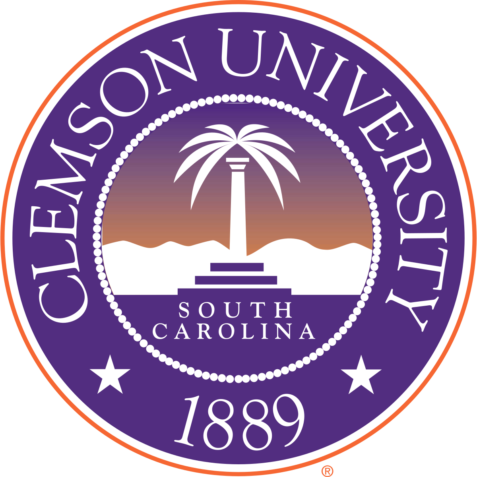Clemson University’s goal is to be one of the top 20 public universities in the nation, and it has received numerous accolades for the accomplishments of its staff, students and programs.
However, attracting and retaining leading educators and top-ranked students is no easy task when faced with constraints on human and financial resources. To meet the ongoing challenge of providing services to about 17,000 students and more than 4,500 employees, Clemson needed to streamline administrative processes and create a more agile infrastructure. Paper-intensive processes posed a number of challenges. In addition to process inefficiencies, storage of physical records became burdensome, as filing cabinets seemed to multiply and take up valuable space. Relying on hard copies of documents not only increased the amount of time necessary to locate information, it also made it harder to share information between various locations on campus as well as the nine extension offices and research centers scattered across South Carolina.
students is no easy task when faced with constraints on human and financial resources. To meet the ongoing challenge of providing services to about 17,000 students and more than 4,500 employees, Clemson needed to streamline administrative processes and create a more agile infrastructure. Paper-intensive processes posed a number of challenges. In addition to process inefficiencies, storage of physical records became burdensome, as filing cabinets seemed to multiply and take up valuable space. Relying on hard copies of documents not only increased the amount of time necessary to locate information, it also made it harder to share information between various locations on campus as well as the nine extension offices and research centers scattered across South Carolina.
KeyMark Passes the Test
Clemson’s HR Department was the first department to implement document imaging. In addition to maintaining the records for thousands of active and former employees, the HR Department is responsible for retirement documents and all other permanent employee records accumulated at the century-old university. The volume was overwhelming. Growing stacks of HR files threatened to overrun the entire department, and accessing them was becoming increasingly difficult. Some documents were being archived on microfilm, but by the mid-90s, this solution was becoming increasingly problematic.
Regardless of whether the documents were on microfilm or paper, retrieving them based on requests from employees or administrators took unacceptably long.
“We wanted to be able to image all documents into a single personnel file, sort them any way we wanted, and not have to wade through files anymore.” recalls Lucy Arthur, Director of Database and Records Management in Clemson’s HR Department.
A committee was formed to evaluate vendors.
“We wanted a standalone system that could work with our existing hardware and was within our budget,” says Ms. Arthur.
Among the requirements were a GUI (graphical user interface) in a Windows environment and a tight integration with Clemson’s PeopleSoft HR application. During the vendor evaluation, KeyMark was chosen to oversee the project based on its experience and ability to configure a solution to meet those requirements.
Human Resources Goes High-Tech
Using the solution KeyMark designed, HR documents are now scanned using a Kodak 2500 document scanner and an employee completes indexing information (such as name and social security number). The scanned documents are managed by OnBase, which allows HR employees to enter queries about files using the indexed terms and retrieve them in seconds without leaving their desks. The system was initially deployed to manage inactive files and will be expanded to manage active employee files as well.
“Once we decided how we wanted to index the files, the set up was easy, and the entire system fit on a single table.”
Employees in the HR department required very little training to use the imaging system, and no full-time staff members are dedicated to running it.
Recently, the HR Department expanded its use of the KeyMark solution to include the employment application process.
Sponsored Programs, Financial Aid, Graduate School Join the Band-Wagon
What originated as an effective HR solution is quickly becoming an enterprise-wide solution. The KeyMark solution has been implemented at Clemson’s Sponsored Programs Accounting and Administration (SPAA), the department responsible for administering research grants. Using OnBase, the department has created a virtual folder for each grant. Because various people in multiple departments and locations need access to pre- and post- award documents and contracts, granting secure access via the Web ensures that all interested parties can access them on a timely basis.
Clemson’s Financial Aid Office is also using document management to address space and efficiency issues. The majority of documents currently archived and retrieved are frequently accessed Loan Worksheets, which are now available for information query.
When reorganization at Clemson’s Graduate School resulted in the creation of three separate entities, the benefits of maintaining electronic files become very clear. Instead of the complexities and inefficiencies of checking student files in and out, employees in the Graduate School, Records/Registration and Admissions offices can share files and view them concurrently. By developing lookup tables from the Student Information system, and Kofax Ascent functionality, the Graduate School has reduced the amount of data entry necessary to complete a student file.
Clemson University is not planning on stopping implementation here. Other departments are looking into integration including the Clemson Police Department.
“KeyMark has assisted us in a difficult transition from a departmentally focused imaging system to an enterprise infrastructure. They have also assisted us with building the appropriate technical infrastructure to support the maintenance of the system on an ongoing basis.”
